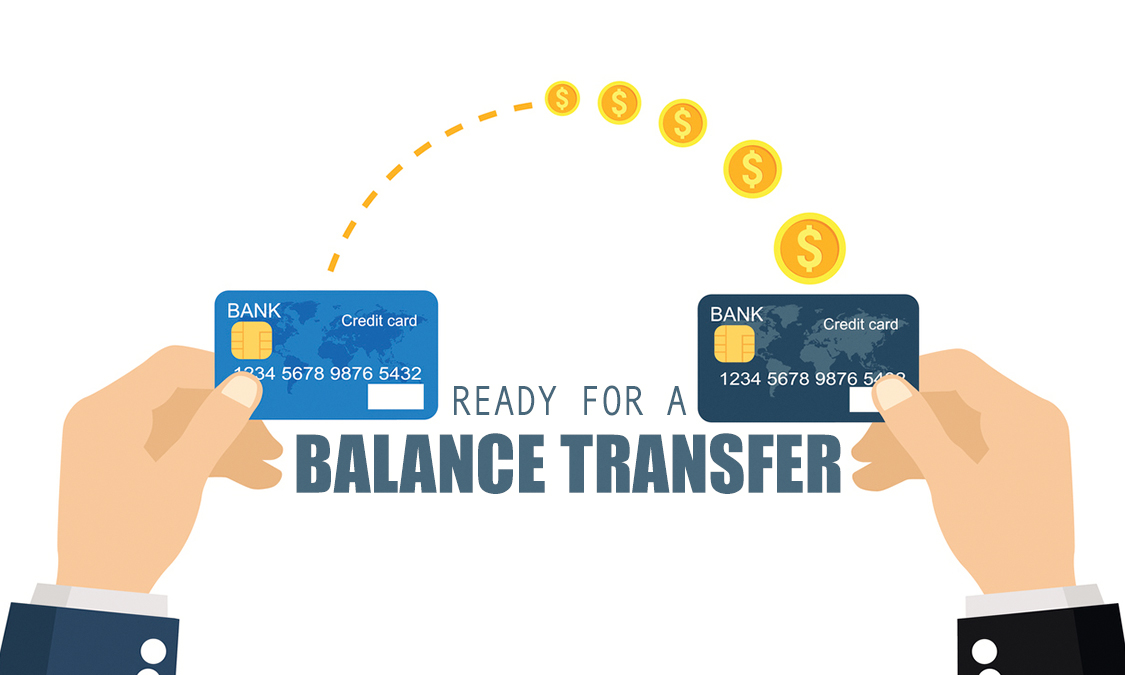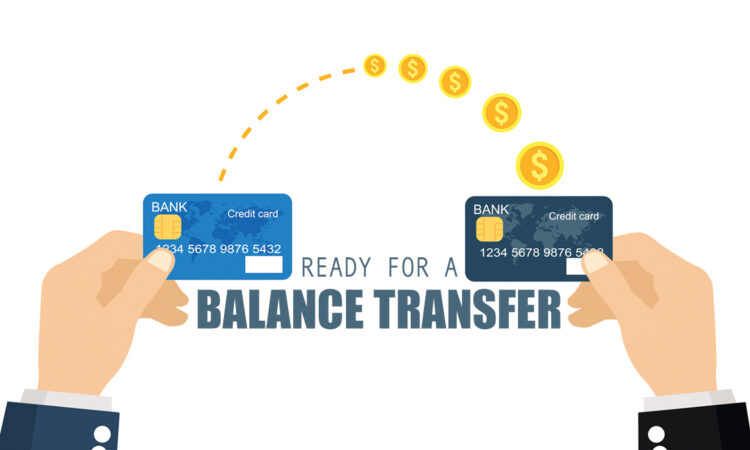
Best balance transfer credit cards can be a lifesaver when you’re drowning in high-interest debt. These cards offer a temporary escape from those crushing interest rates, allowing you to consolidate your debt and potentially save money on interest charges. But before you dive headfirst into a balance transfer, it’s essential to understand the ins and outs of these cards and their potential pitfalls.
Think of a balance transfer card as a strategic tool for debt management, not a magic bullet. To truly benefit from this option, you need to choose the right card, manage your finances responsibly, and develop a plan to pay down your debt quickly. This guide will equip you with the knowledge and tools to navigate the world of balance transfer credit cards, empowering you to make informed decisions and potentially achieve your financial goals.
Introduction to Balance Transfer Credit Cards

Balance transfer credit cards are a type of credit card that allows you to transfer outstanding balances from other credit cards to the new card. This can be a useful tool for managing debt, particularly if you are looking to consolidate multiple debts or take advantage of a lower interest rate.
Balance transfer credit cards are designed to help consumers save money on interest charges. By transferring a balance to a card with a lower APR, you can reduce the amount of interest you accrue over time. This can be especially beneficial if you have a high-interest credit card balance.
Benefits of Balance Transfer Credit Cards
- Lower Interest Rates: Balance transfer cards often offer introductory APRs of 0% for a certain period, which can help you save on interest charges and pay down your debt faster.
- Debt Consolidation: Combining multiple credit card balances into one can simplify your debt management and make it easier to track your progress.
- Rewards Programs: Some balance transfer cards offer rewards programs, such as cash back or travel points, which can provide additional value.
Potential Drawbacks of Balance Transfer Credit Cards
- Balance Transfer Fees: Most balance transfer cards charge a fee, typically a percentage of the transferred balance, which can add to your overall debt.
- Introductory APRs: While introductory 0% APR periods can be attractive, they are often temporary. Once the introductory period ends, the APR may revert to a higher rate, potentially increasing your interest charges.
- Credit Score Impact: Applying for a new credit card can temporarily lower your credit score, as it represents a hard inquiry on your credit report.
- Minimum Payment Requirements: Balance transfer cards typically have minimum payment requirements, which may not be enough to pay down the balance before the introductory APR expires.
Key Features to Consider

When comparing balance transfer credit cards, several key features play a crucial role in determining the most beneficial option for your financial situation. These features directly impact the cost of transferring your debt and the overall value proposition of the card.
Introductory APRs and Their Duration
The introductory APR (annual percentage rate) is the interest rate applied to your transferred balance during a specified period. This rate is typically significantly lower than the standard APR, allowing you to save on interest charges and potentially pay off your debt faster. The duration of the introductory APR is equally important, as it determines how long you benefit from the lower rate.
A longer introductory period allows you more time to pay down your balance before the standard APR kicks in.
For example, a card offering a 0% APR for 18 months would be more advantageous than one offering the same rate for only 12 months, assuming you need more time to pay off your debt.
Balance Transfer Fees
Balance transfer fees are charged when you move your debt from another credit card to a new one. These fees are typically expressed as a percentage of the transferred balance.
Balance transfer fees can range from 3% to 5% of the transferred amount.
While a lower introductory APR might seem attractive, a high balance transfer fee can offset the savings you gain from the lower interest rate. Therefore, it’s essential to consider the overall cost of the balance transfer, including both the fee and the interest charges, when making your decision.
Other Associated Charges
Besides balance transfer fees, some credit cards may impose other charges, such as annual fees, late payment fees, and over-limit fees. These charges can significantly impact the overall cost of using the card, so it’s essential to be aware of them and factor them into your comparison.
A card with a lower APR but higher annual fees might not be the best option if you plan to use the card long-term.
Key Features Comparison Table
| Feature | Description | Importance |
|—|—|—|
| Introductory APR | Interest rate applied to transferred balance for a specified period. | Lower introductory APRs can save you on interest charges. |
| Introductory APR Duration | Length of time the introductory APR is valid. | Longer durations allow more time to pay down the balance. |
| Balance Transfer Fee | Percentage charged on the transferred balance. | Lower fees reduce the overall cost of the transfer. |
| Other Associated Charges | Fees like annual fees, late payment fees, and over-limit fees. | Consider the impact of these fees on the overall cost. |
Eligibility and Requirements
Securing a balance transfer credit card requires meeting specific eligibility criteria. Lenders carefully assess your creditworthiness to determine your suitability for a balance transfer offer.
Credit Score Requirements
Credit score is a significant factor in determining your eligibility for a balance transfer credit card. Credit scores range from 300 to 850, with higher scores indicating better credit history. Most lenders prefer applicants with good to excellent credit scores, typically 670 or above. A higher credit score usually translates into more favorable interest rates and better terms.
Income and Debt-to-Income Ratio
Lenders also consider your income and debt-to-income (DTI) ratio. DTI represents the percentage of your monthly income dedicated to debt payments. A lower DTI generally signifies better financial management and increases your chances of approval. Lenders may have specific DTI requirements, often seeking a DTI below 43%.
Application Process and Documents
The application process for a balance transfer credit card is generally straightforward. You’ll typically need to provide personal information, including your name, address, Social Security number, and employment details. You may also be required to submit documents for verification, such as proof of income (pay stubs or tax returns) and recent bank statements. Lenders may perform a hard credit inquiry to assess your credit history.
Different Types of Balance Transfer Cards

Balance transfer credit cards are designed to help consumers consolidate high-interest debt from other credit cards, typically offering a promotional period with a 0% APR. However, not all balance transfer cards are created equal, and the best card for you will depend on your individual needs and creditworthiness.
Balance transfer cards can be categorized based on their target audience or specific features.
Cards for Individuals with Excellent Credit
Individuals with excellent credit scores typically have access to a wider range of balance transfer cards with more favorable terms, such as longer introductory periods and lower transfer fees. These cards often come with additional perks like rewards programs or travel benefits.
Cards for Individuals with Fair Credit
Individuals with fair credit scores may have more limited options, but there are still balance transfer cards available for them. These cards often have higher APRs and transfer fees, and may require a security deposit.
Cards with Rewards Programs
Some balance transfer cards offer rewards programs, allowing you to earn points or cash back on your purchases. This can be a valuable benefit if you plan to use the card for everyday spending. However, it’s important to weigh the potential rewards against the card’s APR and fees.
Cards with Travel Perks
Other balance transfer cards offer travel perks, such as airline miles or hotel points. These cards can be beneficial if you’re a frequent traveler. However, it’s essential to consider the card’s redemption requirements and whether the travel perks align with your travel habits.
Choosing the Right Card
With a variety of balance transfer cards available, finding the one that best suits your needs is crucial. This involves a careful evaluation of your financial situation, the features offered by different cards, and your long-term goals.
Factors to Consider When Choosing a Balance Transfer Card
To select the most suitable balance transfer card, consider the following factors:
- Balance Transfer Fee: This is a percentage of the transferred balance charged by the card issuer. A lower fee is generally preferable.
- Introductory APR: This is the interest rate charged on the transferred balance for a specific period. Aim for a card with a long introductory period and a low APR.
- Regular APR: This is the interest rate applied after the introductory period ends. Ensure that the regular APR is manageable and compares favorably to other credit card options.
- Minimum Payment: A higher minimum payment can make it more difficult to pay off the balance quickly. Consider a card with a lower minimum payment to avoid accruing high interest charges.
- Rewards and Perks: Some balance transfer cards offer rewards programs, such as cash back or travel miles. Evaluate if these benefits are relevant to your needs and outweigh any additional fees or drawbacks.
- Credit Limit: Choose a card with a credit limit that is sufficient to cover your transferred balance and leave room for future purchases.
- Credit Score Requirements: Different cards have different credit score requirements for eligibility. Ensure you meet the requirements before applying.
Step-by-Step Guide for Choosing a Balance Transfer Card
Follow these steps to select the best balance transfer card for your needs:
- Assess Your Financial Situation: Determine the amount of debt you need to transfer, your current credit score, and your ability to make timely payments.
- Research Available Options: Compare different balance transfer cards based on their features, fees, and APRs. Utilize online comparison tools or consult with a financial advisor.
- Consider Your Long-Term Goals: Evaluate your debt payoff strategy and determine if a balance transfer card aligns with your overall financial objectives.
- Compare Introductory APRs and Fees: Focus on cards with long introductory periods and low fees. Aim for a card with a low regular APR as well.
- Check Credit Limit and Minimum Payment Requirements: Ensure the card offers a sufficient credit limit and a minimum payment that fits your budget.
- Review Rewards and Perks: Consider whether any rewards or perks offered by the card are valuable to you.
- Apply for the Card: Once you’ve chosen a card, submit an application and ensure you meet the eligibility criteria.
Flowchart for Choosing a Balance Transfer Card, Best balance transfer credit cards
The following flowchart illustrates the decision-making process:
[Image of a flowchart depicting the steps involved in choosing a balance transfer card. The flowchart could include nodes representing the assessment of financial situation, research of available options, consideration of long-term goals, comparison of introductory APRs and fees, checking credit limit and minimum payment requirements, reviewing rewards and perks, and applying for the card.]
Comparison Table of Popular Balance Transfer Cards
Here’s a table comparing key features and benefits of various popular balance transfer cards:
| Card Name | Introductory APR | Introductory Period | Balance Transfer Fee | Annual Fee | Rewards | Credit Limit | Credit Score Requirement |
|---|---|---|---|---|---|---|---|
| Card A | 0% | 18 months | 3% | $0 | Cash back | $10,000 | 670+ |
| Card B | 0% | 15 months | 2.99% | $95 | Travel miles | $5,000 | 700+ |
| Card C | 0% | 12 months | 3.99% | $0 | Points | $7,500 | 650+ |
Utilizing a Balance Transfer Card Effectively: Best Balance Transfer Credit Cards
A balance transfer card can be a valuable tool for managing debt, but it’s crucial to use it strategically to maximize its benefits and avoid potential pitfalls. By understanding how these cards work and implementing smart strategies, you can effectively reduce your debt burden and save money on interest charges.
Minimizing Transfer Fees and Utilizing Promotional Periods
Transfer fees are a common expense associated with balance transfer cards. To minimize these costs, research cards with low or no transfer fees, especially during introductory periods. It’s also essential to understand the terms of the promotional period. This period typically offers a 0% APR for a specific duration, after which a standard interest rate applies. To make the most of this grace period, aim to pay off the transferred balance before the promotional period ends.
- Compare transfer fees: Look for cards with low or no transfer fees, especially during introductory periods. Some cards might waive transfer fees for a limited time, while others offer a fixed fee, often expressed as a percentage of the transferred balance.
- Plan for the promotional period: Understand the duration of the 0% APR period and develop a repayment plan to ensure you pay off the balance before the promotional period expires. A common strategy is to make larger-than-minimum payments to accelerate debt reduction.
- Avoid making new purchases: Focus on paying down the transferred balance during the promotional period. Making new purchases on the card can negate the benefits of the 0% APR offer and increase your overall debt.
Managing Debt and Avoiding Interest Charges
The key to success with a balance transfer card is to pay down the transferred balance as quickly as possible. This prevents accruing interest charges and allows you to take advantage of the 0% APR period.
- Calculate your minimum payment: Understand the minimum payment required each month to avoid late fees and ensure you’re making consistent progress towards paying off the balance.
- Set a realistic repayment plan: Determine a reasonable amount you can comfortably pay each month, considering your income and other financial obligations.
- Make extra payments: If possible, make extra payments beyond the minimum amount to accelerate debt reduction. Even small additional payments can significantly reduce the time it takes to pay off the balance.
Strategies for Maximizing Benefits
To fully leverage the benefits of a balance transfer card, consider these additional strategies:
- Consolidate multiple debts: Transfer balances from multiple high-interest credit cards onto a single balance transfer card with a 0% APR period. This can simplify debt management and potentially reduce overall interest charges.
- Avoid using the card for new purchases: Focus on paying down the transferred balance during the promotional period. Using the card for new purchases can negate the benefits of the 0% APR offer and increase your overall debt.
- Keep track of your spending: Monitor your spending habits to ensure you’re not accumulating new debt while using the balance transfer card.
Final Summary
Ultimately, balance transfer credit cards can be a valuable tool for tackling high-interest debt, but they’re not a one-size-fits-all solution. By carefully considering your individual circumstances, understanding the terms and conditions, and utilizing the strategies Artikeld in this guide, you can leverage these cards to your advantage and make significant progress towards financial freedom. Remember, the key to success lies in responsible use and a well-defined plan for debt repayment.
FAQ Compilation
What is the minimum credit score needed for a balance transfer credit card?
The minimum credit score requirement for balance transfer cards varies by issuer, but generally, you’ll need a good credit score, typically 670 or higher, to qualify.
How long does it take to transfer a balance?
The time it takes to transfer a balance depends on the issuer, but it usually takes a few business days to a week.
What happens if I don’t pay off the balance before the introductory APR expires?
Once the introductory APR period ends, the regular APR will apply, which can be significantly higher. You could end up paying more interest than you would have if you hadn’t transferred the balance in the first place.





